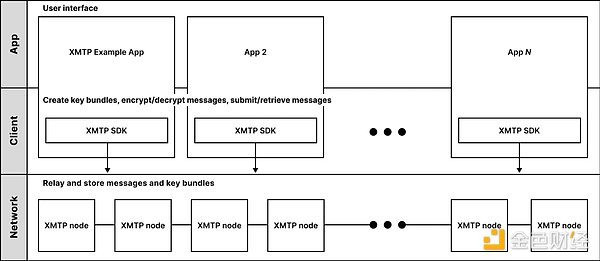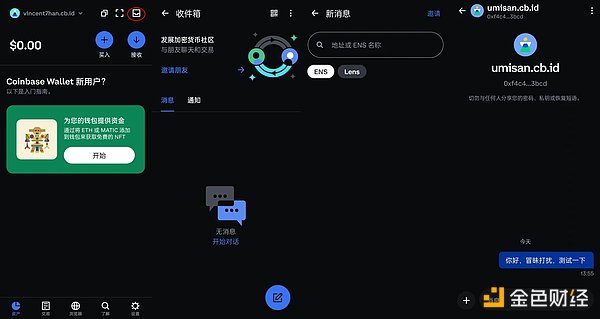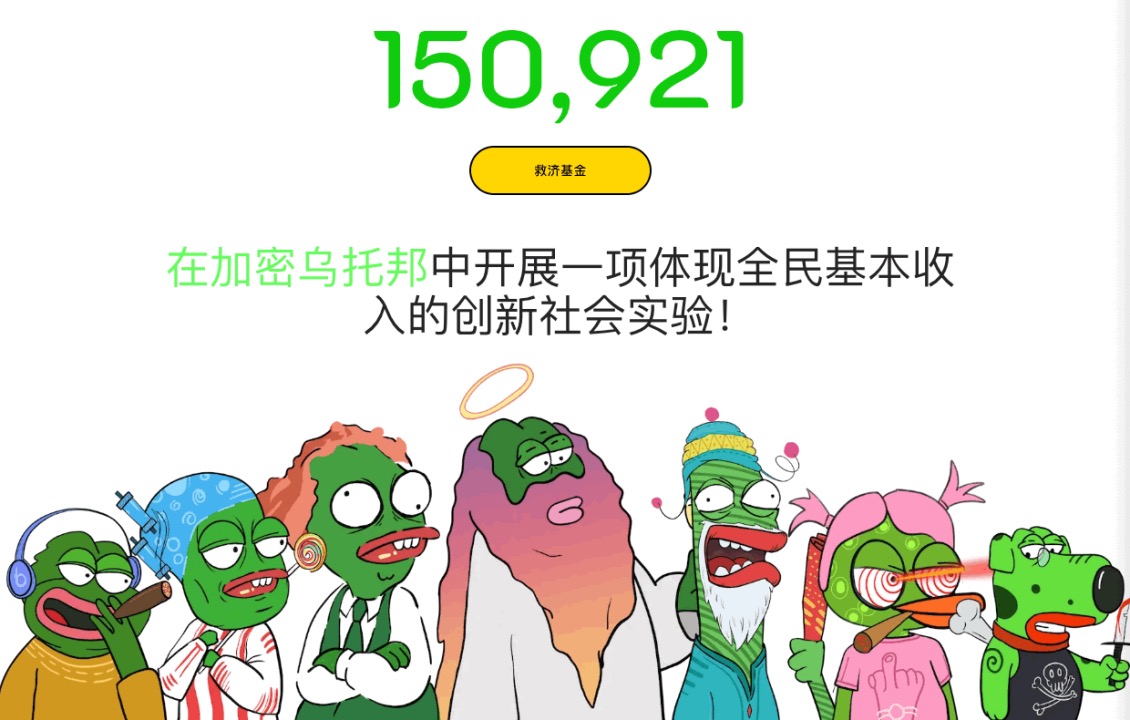What is the social protocol XMTP, which is collaborating with Coinbase and Lens, all about?
What is XMTP, the social protocol collaborating with Coinbase and Lens, all about?Recently, Coinbase Wallet released a video explaining that Coinbase Wallet has integrated with the open-source communication network XMTP to enable instant messaging between wallet addresses.
It is understood that XMTP not only cooperates with Coinbase Wallet but also helps the newly released decentralized social media protocol Lens Protocol v2 to open an instant messaging module. In addition, applications within the XMTP network ecosystem can communicate with each other.
In the current Web3 social competition, many social projects highlight decentralization as their core feature, aiming to compete with Twitter. However, most of these projects make a lot of noise but achieve little. XMTP seems to be taking a unique path: exploring the encryption-native scenes with real demand, such as NFT markets, wallets, DeFi, and more.
So, how is the current technological development of this project? What partnerships have been established? And how will instant messaging bring changes to the design of Web3 projects?
- Stick to the Right Path and Surprise Everyone A Rational Choice for ETH Staking’s Security and Returns
- Unraveling the Rise and Fall of Open Edition NFTs
- Three Reasons to Be Bullish on Pendle Earn
Overview of the XMTP Project
XMTP is positioned as a communication infrastructure for Web3, providing a more secure and private way to transmit Web3 messages. It includes features such as identity verification, end-to-end encryption, interoperable inboxes, and message relaying.
The overall structure of XMTP consists of three layers: the network layer, the client layer, and the application layer.

1. Network Layer
The XMTP network layer is built by peer-to-peer node operators. Nodes provide message APIs, allowing client applications to exchange messages through the XMTP network.
Nodes store envelopes (the packaging style of messages, including the sender and receiver) in topics (the passers-by involved in this message) and forward them to other nodes, allowing client applications to retrieve the envelopes. In simple terms, node operations are similar to other projects, mainly responsible for message synchronization, packaging, and delivery.
Currently, the XMTP network layer is operated by the project team themselves, and decentralization will be achieved through open node registration and incentive policies in the future.
2. Client Layer
The client layer is composed of clients built using the XMTP SDK. Clients are responsible for creating XMTP identities, encrypting and decrypting data, and communicating with the XMTP network. In simple terms, the XMTP SDK is built and used by the corresponding project team and has little to do with users.
3. Application Layer
The application layer consists of projects within the XMTP ecosystem. XMTP takes a B2B route, not directly acquiring users from the C-end, but establishing collaborations with other Web3 protocols or products to achieve message transmission between blockchain accounts at the application layer, enriching its own ecosystem and forming a network effect. Currently, participants in the XMTP ecosystem include CyberConnect, Lens, Coinbase, Converse, ENS, unstopLianGuaible domains, and more.
From the perspective of XMTP technology, XMTP aims to create a basic communication infrastructure network that allows projects accessing this network to break through communication barriers. For example, in Web2, WeChat and Alipay cannot communicate with each other because they each have their own social communication networks and cannot transmit messages across barriers. However, in the XMTP ecosystem, users can connect with each other through wallet addresses as unique identifiers in the XMTP network, enabling effective message transmission.
It is worth noting that in August 2021, XMTP completed a Series A financing round of $20 million, led by a16z, with participation from institutions and individuals such as Coinbase Ventures and StarkWare. As a result, XMTP is able to collaborate with Coinbase Wallet, which is not surprising.
Instant Messaging Experience
XMTP not only integrates with Coinbase Wallet but also collaborates with Lens for development. Odaily Star Daily tested this feature using two products.
1. The following image shows the instant messaging between Coinbase Wallets, which is relatively smooth, with good timeliness in sending and receiving messages.

In the above image from left to right, Coinbase Wallet goes from the initial interface to the message sending and receiving interface, then to the contact search interface, and finally to the chat content interface. Since XMTP also integrates with ENS, the user experience of finding specific users is relatively good.
However, the experiment in the above image was conducted with a randomly selected object and without the need for the other party’s consent to start a conversation. This raises concerns about privacy (how is it different from spam messages), but it is more convenient and accurate for the implementer.
2. The following image shows the interoperable communication between Coinbase Wallet and Lens, both of which are in the XMTP communication ecosystem and can engage in instant messaging.

The left image shows the Lens interface, and the right image shows the Coinbase Wallet interface. Currently, the timeliness of messages between the two is strong. As can be seen from the red circle at the bottom of the left image, in addition to message delivery, images, files, and other content can also be sent. However, Coinbase Wallet does not yet support functions beyond text messaging.
What can XMTP bring to Web3?
As a relatively niche field, SocialFi often faces skepticism about whether decentralization and token economics are pseudo-demands for social interaction. Indeed, most users tend to prioritize functionality over decentralization. Web3 social applications have lagged behind in telling a story of “mass adoption,” while “small and beautiful” products struggle to create network effects and contribute to ecosystem development.
Faced with this challenge, XMTP provides its answer by focusing on the needs of the crypto-native scene.
In its v2 documentation, the official XMTP team envisions several scenarios:
Decentralized social networking: Similar to using WeChat. Discover new friends, create groups, share stickers, and send group files.
Project marketing: During the initial promotion of a new project, project teams can choose to send marketing messages to holders of relevant NFTs and tokens, which can greatly help with project bootstrapping.
Customized client features: Provide tailored services for specific B-side needs, such as conducting financial transactions, AI customer service, and streamlining DAO operations within the chat.
DeFi: Sending secure transaction confirmations, notifications, token transfers, NFT minting, etc.
GameFi: Real-time message delivery, group chats, in-game notifications, etc.
We also imagine some specific scenarios, such as:
1. Asset risk warning: Recently, there have been frequent risks in cross-chain bridge assets. If the project team discovers this, they can notify the user community using the bridge as soon as possible, which can reduce some losses.
2. Bargaining function in the NFT market: When users purchase NFTs on Opensea, they may come across a desirable PFP (Profile Picture), but the price is not ideal. It’s not enough to simply provide a desired offer. If they can communicate with the owner in a timely manner, the chances of a successful transaction will be increased. (Currently, this function can be achieved through OTC swap, which is also integrated into XMTP.)
3. NFT owner community building: Through the collaboration of XMTP’s ecological projects, NFT project teams can find owners through Lens and Coinbase Wallet, and initiate immediate contact. (Discord can also be used, but it is not Web3.)
As an underlying communication protocol, if the richness of the XMTP ecosystem continues to increase in the future, the possibility of interoperability between projects in the ecosystem will also increase, leading to unexpected scenarios. From this perspective, XMTP is at least easier to explain in terms of narrative.
We will continue to update Blocking; if you have any questions or suggestions, please contact us!
Was this article helpful?
93 out of 132 found this helpful
Related articles
- Introduction to Zero Knowledge Proofs
- What happened with the price surge of over 400% in the community tokens of multiple subreddits in just two days?
- Comprehensive Analysis of Opportunities and Challenges in the RWA Track
- Vitalik EthCC Speech Summary Account Abstraction Will Completely Change Wallet Interaction Methods
- A SNARK player actually announced that they will follow STARK?
- CME Executive Why Are People Interested in Our Cryptocurrency Products
- Hubei police crack the first nationwide ‘virtual currency case’, with a transaction volume of 400 billion.






